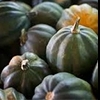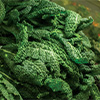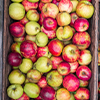
Featured Produce | Summer Quarterly 2020
Featured Produce: Tomatoes
The French and Germans, who first met the tomato in the 16th century, dubbed it "the apple of love," and "the apple of paradise." Our less-romantic name for the fruit dates back further, though, to the Aztecs, who called it "xitomati," or "plump thing with a navel."
Every U.S. state grows tomatoes, and over 90 percent of home gardeners include tomatoes in their plantings. California and Florida outpace all other states by growing over two-thirds of the tomatoes for fresh consumption, and California grows almost all the tomatoes that are processed into soups, sauces, catsup, salsa and more.
According to the USDA, tomatoes are an easy way to boost your intake of the antioxidant lycopene, and they are a very good source of vitamin C, vitamin A, vitamin K, potassium, manganese, and dietary fiber. They also provide smaller amounts of vitamin E, thiamin, vitamin B6, folate, magnesium, phosphorus, and copper. Incidentally, vine-ripened tomatoes will deliver much more vitamin C than those that were picked green.
There are many thousands of varieties of tomatoes, from small to large, acidic to mild, and an array of colors—including red, yellow, orange, green, purple, and brown. Not all tomatoes are round, either. You will find heirlooms in a bevy of shapes and colors, each with subtly different flavors and textures.
There are three general categories of tomatoes, though: paste, slicing and cherry.
Paste tomatoes have a low water content and thick flesh. Common varieties of paste tomatoes include: Roma, Plum, Saladette, San Marzano and Roman Stripe.
Slicing tomatoes are juicy and flavorful – just perfect for slicing! Common varieties of this type of tomato include: Beefsteak, Early Girl and Big Boy. Heirloom varieties of slicing tomatoes include Cherokee Purple, German Stripe, Brandywine, and Green Zebra.
Cherry tomatoes are small and very sweet. Varieties include: Sweet 100, Grape, Sugar Plum, Sungold, Yellow Pear, Peacevine Cherry and Currant.
In most areas, you will find the best supply of fresh tomatoes from July through September. Whenever you can, choose a vine-ripened tomato, because it will have both the best taste and the highest nutrient content. A ripe tomato should be soft but not mushy; it should yield under pressure. And it should be fragrant. Slightly cracked skins and weird shapes are not a problem but avoid leaky tomatoes and those with soft spots and bruises. Select tomatoes that are heavy for their size, with bright coloring.
Once home, do not refrigerate your tomatoes, because cold temperatures will compromise their flavor and texture. Store them at room temperature instead. If you must refrigerate (to keep them from spoiling), remove them half an hour before serving for maximum flavor and juiciness.
Whether you grow your own or bring them home from the farmers’ market or co-op, there is no shortage of ways to enjoy the stunning variety of tomatoes. Celebrate the summer season by making this Heirloom Tomato Gazpacho.




